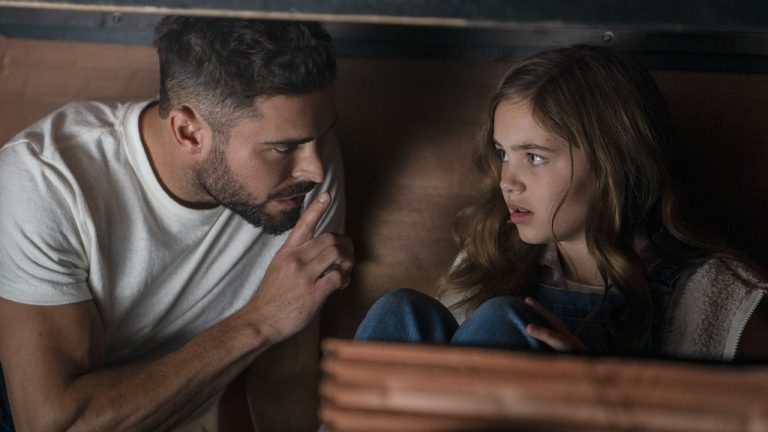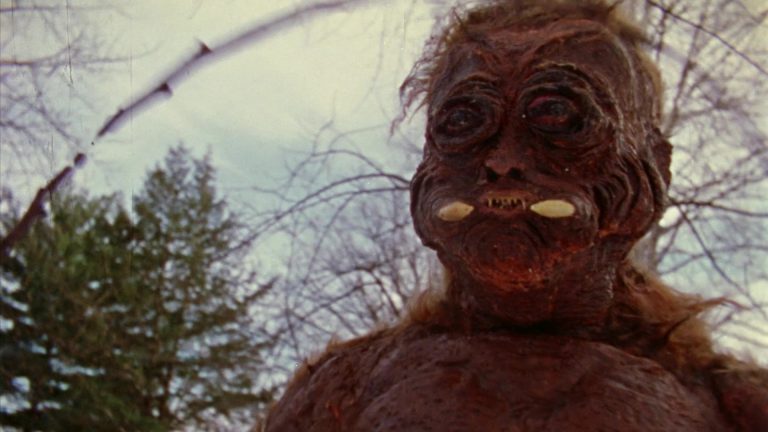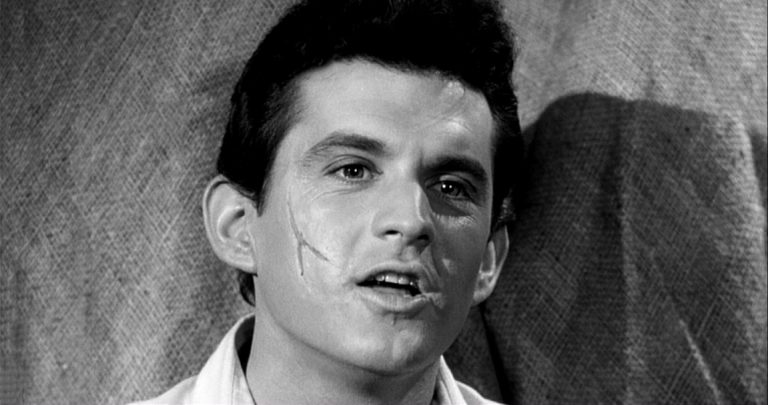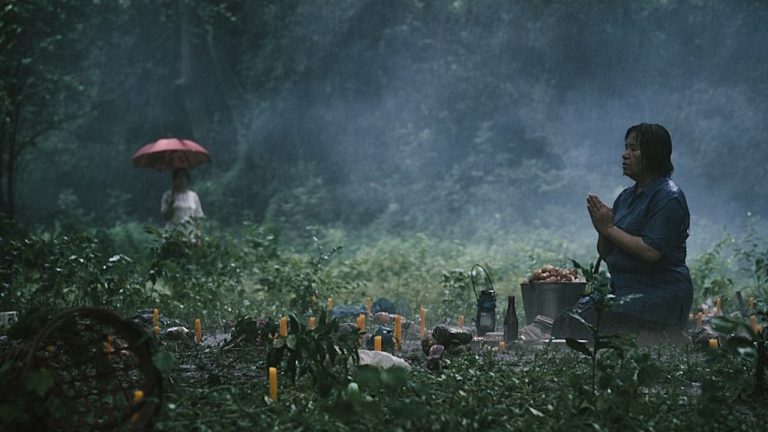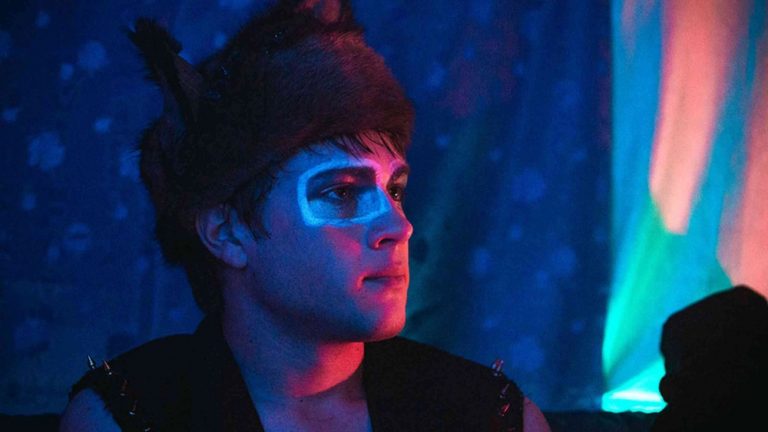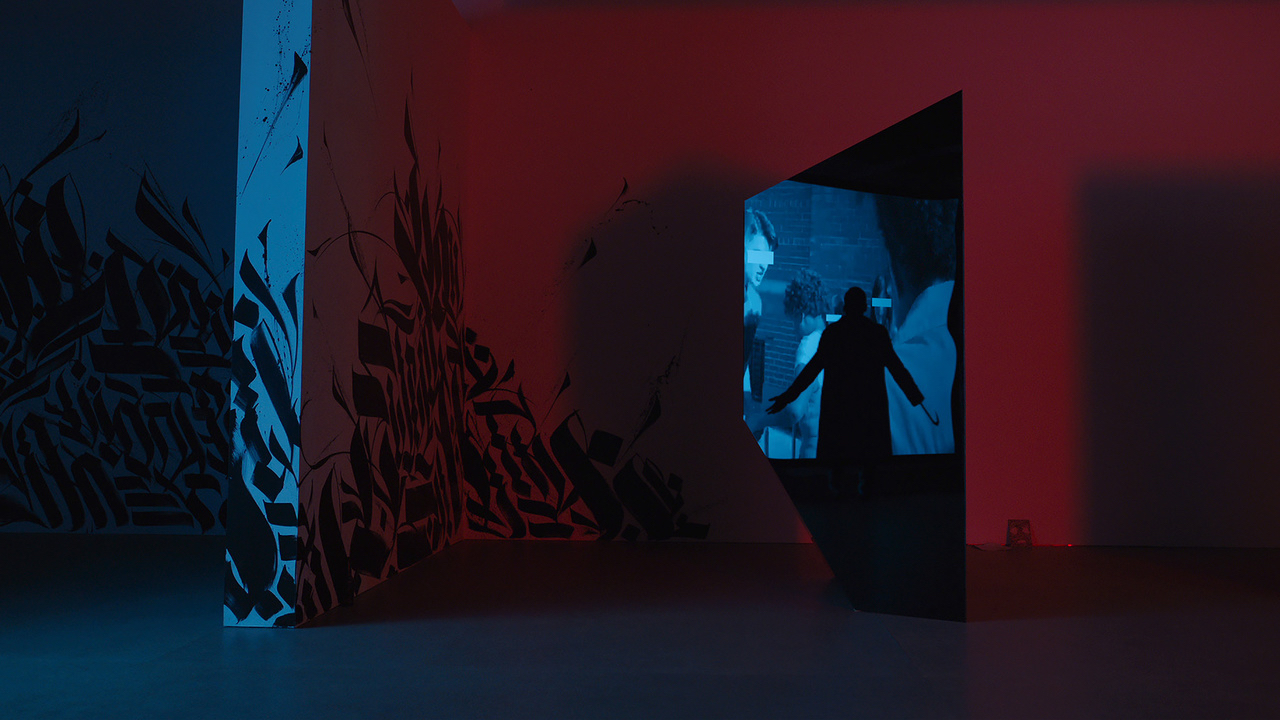
I liked CANDYMAN, just not as much as I’d hoped. Perhaps this is inevitable when a slightly worrying if much-loved exploitation title is retrofitted with a more contemporary meaning. Maybe something got lost in the mix? But I also think it was a lost opportunity, somehow dialled back to sit within its 15 certificate, keen to find a wider audience but losing that balancing act between drama and horror.
Nia DaCosta’s film – co-written with co-producers Jordan Peele and Win Rosenfeld – takes the story of 1992’s CANDYMAN and reworks the same narrative structure. Instead of a white female researcher discovering the horrors hidden in the Black ghetto, we have a Black male artist getting dragged down a gentrified rabbit hole. The film operates as a sequel to the original – which gets mined for backstory through on-screen archive content – and expanded upon; instead of one Candyman origin story, we get several, positioning the central spectre as one of a series of victims of white brutality. And this is a film boldly driven by the Black/female gaze and experience of its makers. They also seem reluctant to commit some of the usual sins of any horror franchise, meaning women can fight their way out of danger and the token homos are more than mere meat for the grinder. But I still wish it had been a more aggressive reboot.
Some good-to-great things include the monstrous score (by Robert Aiki Aubrey Lowe) that drives us through the fog-shrouded towers of modern-day Cabrini-Green in a mesmerising title sequence. There’s also some wonderful shadow puppetry by Chicago-based puppet theatre company Manual Cinema, that fills in the backstory, giving us a veritable revenger’s assembly of Candymen. And there are some mesmerising kills that would not be out of place in a stylish 1970s giallo. There’s one kill, filmed as the camera pulls way back so that we see the murder framed by its urban context, that’s seriously jaw-dropping cinema. But it’s those slick kills that also highlight what’s missing, not just the gratuitous gore that gialli revelled in – it’s actually nice not to have to witness too many female/Black bodies being ripped apart – but by filming everything from a polite social distance, the horror also feels more remote and abstract, as if holding back out of fear of offending rather than releasing a full-throated roar of anger and anguish.
And that’s surely the point of horror cinema, not to make you feel good for engaging with the issues, but to tip you over the edge where the fear of being dragged down is what, eventually, wakes you up. For me, the most terrifying horror films are the ones that feel out of control, as if possessed by their own evil spirits. CANDYMAN falls short of the carnival of excess that’s the potential promise of the genre. Now, I’m not saying horror can’t be subtle, but this is a story of how a series of Black men were brutally murdered before returning to take vengeance with hooks for hands, rather than a delicate haunted house movie… it quite simply needs more guts.
Channelling Black Lives Matter does bring vital energy to the genre, particularly by the time of a concluding massacre that delivers a powerful message. The film offers some sophisticated social commentary too where the Black middle class are implicated in the gentrification of the ghetto, and artists – often seen as positive cultural transformers – are nailed for occasionally exploiting their circumstances. It’s just a shame the satirical scenes set within the art world are so crudely written – as if no one has ever tried to burst this particular bubble before – and cinema’s commitment to mixed-race gay couples is starting to look irrational (don’t Black queer people ever fall in love with other Black queer people…?).
Ultimately, it’s a film that falls short of a coherent way of harnessing its potential energy. This is revealed in two scenes that sit uncomfortably within the edit. Part of the fun of the CANDYMAN franchise is the ‘will they / won’t they’ moments when characters look into the mirror (am I the only one to count utterances of his name on my fingers just to make sure…?). But, an isolated scene where a group of teenage school girls takes the dare feels edited-in from another movie, as if someone somewhere realised they’d made a horror film without sufficient horror. And then there’s a massive logic leap into the final sequence, where a seemingly benign character is suddenly jabbering like a loon…
There is, however, a moment in the closing credits where – in another standout sequence by Manual Cinema – the Candymen of history finally appear together. For me, this was the real gut punch of the movie, and one missed by those audience members who rarely stay that long. I wish the filmmakers had taken the opportunity to flesh out this rotten backstory rather than stick to the narrative structure of the original. For all that Black Lives Matter understandably became associated with the horrific murder of one man, the even greater horror is how often such barbarism has been and is still being repeated. CANDYMAN is a good film, but there was potential for it to be an angrier, more brutal and significantly more damning one.

IN BRIEF: CANDYMAN (2021) is a good film, but there was potential for it to be an angrier, more brutal and significantly more damning one.
STRAPLINE: “Dare to say his name.”


IDILA

